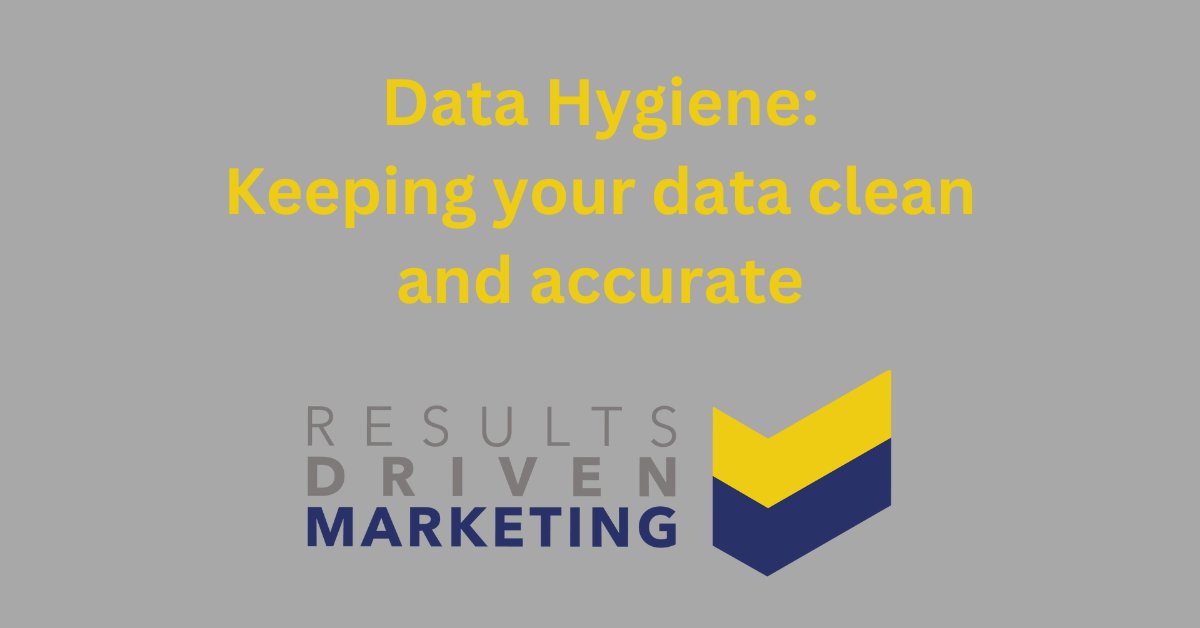
Data Hygiene: Keeping Your Data Clean and Accurate
Data hygiene is a critical component for businesses and organisations to make informed decisions.
However, data can quickly become outdated, incomplete, or inaccurate, leading to unreliable insights and poor decision-making.
To avoid these issues, it’s essential to maintain data hygiene. In this article, we’ll explore what data hygiene is, why it’s important, common data issues, data cleaning techniques, data quality standards, data governance, data privacy and security, the importance of data validation, best practices for maintaining data hygiene, and the importance of data backup and recovery.
Importance of Data Hygiene
Data hygiene refers to the process of maintaining accurate and up-to-date data. It’s critical for businesses, individuals, and organisations to maintain data hygiene to make informed decisions.
Clean and accurate data helps organisations identify trends, opportunities, and challenges. Accurate data helps businesses to create targeted marketing campaigns, improve customer service, and make informed business decisions.
Common Data Issues
Several common data issues can arise, such as duplicate records, incorrect data entry, incomplete data, outdated data, and inconsistent formatting. Duplicate records occur when the same information is recorded more than once, leading to a waste of resources and confusion. Incorrect data entry can occur due to human error, leading to incorrect information being recorded. Incomplete data occurs when not all necessary information is recorded, leading to unreliable insights. Outdated data occurs when data is not regularly updated, leading to inaccurate insights. Inconsistent formatting occurs when data is not consistently recorded, leading to difficulty in comparing and analyzing data.
Data Cleaning Techniques
Several data cleaning techniques can be used to maintain data hygiene. Profiling of data involves analyzing data to identify errors, inconsistencies, and incomplete data. Data parsing involves breaking down complex data into smaller, manageable chunks. Matching of data involves comparing data from different sources to identify duplicates or inconsistencies. Standardization of data involves ensuring that data is consistently recorded.
Data Quality Standards
Quality of data standards are essential for maintaining data hygiene. They are used to ensure data is accurate, complete, and consistent. Data quality standards include guidelines for data entry, data verification, and data validation.
Governance of Data
Governance of data refers to the policies, procedures, and guidelines that govern the collection, storage, and use of data. Data governance is critical for maintaining data hygiene. It includes guidelines for data entry, data validation, data backup, and data recovery. Data governance ensures that data is collected and used ethically and legally.
Data Privacy and Security
Hygiene of data can impact data privacy and security. Poor data hygiene can lead to data breaches, which can result in loss of sensitive information, reputational damage, and legal consequences. Maintaining data hygiene is critical for ensuring data privacy and security.
Importance of Data Validation
Validation of data is essential for maintaining data hygiene. It involves verifying the accuracy and integrity of data before it is used for analysis or decision-making. Validation of data ensures that data is accurate, complete, and consistent.
Backup of Data and Recovery
Backup of data and recovery procedures are critical for maintaining data hygiene. Regular backups and disaster recovery plans ensure that data is protected and can be restored in case of data loss or system failure.
Best Practices for Maintaining Data Hygiene
Several best practices can be followed to maintain data hygiene. Regular data cleaning ensures that data is accurate, complete, and consistent. Automated data validation reduces the risk of errors and inconsistencies. Creating data quality dashboards provides visibility into data quality and helps identify data issues.
Conclusion
Data hygiene is essential for maintaining accurate and reliable data for analysis and decision-making. Maintaining data hygiene involves identifying common data issues, using data cleaning techniques, following data quality standards, implementing data governance, ensuring data privacy and security, performing data validation, maintaining data backup and recovery procedures, and following best practices.





